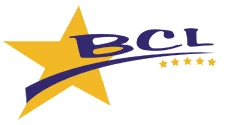The essential knowledge
With so many ‘…aaS’ acronyms being thrown around nowadays, it’s easy to get confused as to what stands for what. We have Contact Centre as a Service, Unified Communication as a Service, Software as a Service, and countless others. Combine that with cloud technology and the confusion just gets worse.
Don’t fret! Your friendly neighbourhood Venom IT solutions team is here to guide you through the minefield of technological jargon.
So let’s set the scene.
Business is booming. Sales are on the rise. Client numbers are through the roof. And you popped an expensive bottle of champagne at the last staff party. Things are going well.
Many small to medium sized enterprises assume that this progress will continue if they just keep on doing what they’re doing. And why not? It’s got you this far, hasn’t it?
But as your customer base expands, it needs to be managed. People are people. They have questions. Some of them may have complaints. They need another method of contacting you as the unread list in the company inbox continues to pile up. You sit at your desk chewing your pen and pondering the figures.
Fortunately for you, we live in the 21st century where any minor or major inconvenience can be rectified through the wonders of technology. For this particular issue, the tech wizards have blessed us with cloud based contact centres and Contact Centre as a Service. CCaaS for short.
FAQ’s
-
What is a cloud based contact centre?
A cloud based contact centre is the modern day solution to managing customer experience and communications.
In the past, you might have just hired a bunch of people to manage your phones. But setting up the hardware needed to deal with the potential growth you hope to achieve would – even then – have been a costly risk. What if the growth stops and you’re stuck with a call centre setup that exceeds your expected call volumes? What if your business outgrows your system’s capabilities and you have to dish out more money to rebuild it?
Nowadays, call centres just don’t cut it. Making a phone call has become the last resort for post-millennial generations, who prefer the efficiency of texts and emails. Sitting in a customer support phone queue for 20 minutes doesn’t make much sense. Not when you can drop the company a quick message on social media or have a real time conversation in a live chat box. Binning all your phones though means alienating older demographics, who prefer a friendly voice and a more personal approach.
Contact centre solutions consider all the ways that a customer might choose to get in touch with a company. Including email, live chat and automated live chat, email, social media, interactive voice response phone calls, and traditional phone conversations. The contact centre might even throw in a carrier pigeon service if a customer asks nicely.
A cloud based contact centre, as you might expect, takes this multi-channel approach and makes it a cloud based tool. This resource integration can enable businesses to build and deliver a software solution with the same capabilities as a contact centre. However, with none of the hardware, management, or upkeep costs, it can reduce expenses at the same time.
-
What is contact centre as a service (CCaaS)?
CCaaS solutions allow companies to provide the best customer experience possible by outsourcing their contact centre software and collating customer information via the cloud.This means that a client can get in touch via any means of communication. Every customer interaction is situated in context and data is stored and displayed on each customer’s profile. The system and its integration are managed and maintained by an external company. This operator works behind the scenes to keep the tech side of things running smoothly. So your team can focus on providing excellent customer service without the hindrance of IT difficulties.
-
What’s the difference between UCaaS and CCaaS?
UCaaS and CCaaS are two solutions that often get mixed up.
UCaaS stands for unified communications as a service. This shares a lot of similarities with CCaaS or contact centre as a service. Both use cloud software, both minimise costs, and both adopt an omnichannel approach across multiple platforms.
Contact centre as a service, however, is mainly used to streamline customer service. UCaaS, on the other hand, is primarily used for internal communication.
-
Why choose a contact centre solution?
Last week, Advanced Market Analytics published an extensive 225 page report of global cloud based contact centre market insights. In it, they anticipate an unprecedented growth in the use of contact centre as a service models over the next 4 years. The Cisco Global Cloud Index estimates that 94% of computer-based work will be processed by cloud data centres by the end of 2021.
With all this hype, CCaaS providers must be doing something right. During lockdown, shifting operations to the cloud just made sense. Cloud based contact centre technology allowed employees to work from anywhere.
We’re crossing our fingers and cautiously emerging from this tedious saga of lockdowns and self isolation. But we’re coming out of the other side into a new era in the development of customer service. Businesses have embraced the benefits of contact centres and most of them are keeping these systems in place
-
Would employee experience be improved?
CCaaS gives employees complete flexibility when it comes to remote working. With everything accessible via the cloud, staff can work from anywhere and be managed remotely.
It’s not what you want to hear, but COVID isn’t quite out of the picture yet. Increased flexibility is a huge relief for employers seeking to safeguard operations against potential outbreaks.
-
Would it improve customer service?
With unified communications, staff can serve people more coherently, as all customer interactions are logged and are available for them to view.
No more shouty people yelling down the phone that they already answered all these questions with someone else last week. The contact centre staff have all the information to hand to pick up right where that previous conversation left off. This makes their jobs easier and increases employee productivity.
-
Is everything Traceable?
With a holistic system in place, every piece of data can be analysed. From customer data to employee downtime, everything is recorded. These metrics help managers to identify training needs and map out shift schedules in line with peak times.
-
Would it mean more efficient responses?
This taps into scalability. As demand increases, contact centre software is scaled up. Customers don’t have to rock back and forth as they suffer through the 23rd iteration of the world’s most irritating hold music. Calls or live chat queries are answered in a flash and customers are left feeling satisfied.
-
Don’t get left behind
As more and more businesses optimise their customer support capabilities through CCaaS, customer expectations evolve.
Companies will not only have to adhere to their own ideals when it comes to customer service. They’ll also have to meet the standards set by their competitors.
But what are your competitors offering? What shiny new feature do they have that you don’t?
The Digital Journal is calling cloud based contact centres “the next big thing”. However, unlike flared jeans and ‘live laugh love’ posters, this trend is here to stay.
CCaaS evolves. And businesses that use it will already have the ‘next best thing’ in customer service as soon as it’s available. But only if they choose a good contact centre service provider.
As always, our team is on hand and are armed and ready to answer any questions you want to throw at them. Whether you want to discuss CCaaS or how to improve the customer experience, feel free to get in touch.
-
Want to learn more about CCaaS?
For more information about choosing the right CCaaS provider and the benefits of cloud-based contact centres, check out our resources below:
Whitepaper: The best contact centre statistics for your business case
Infographic: On-premises vs cloud contact centre
Brand Battle: RingCentral vs 8×8
Brand Battle: 3CX vs Vonage
Case Study: Ashley Helme Associates
Our Clients
Get in Touch Today
Support 0161 358 1060
Sales 0330 202 0220





